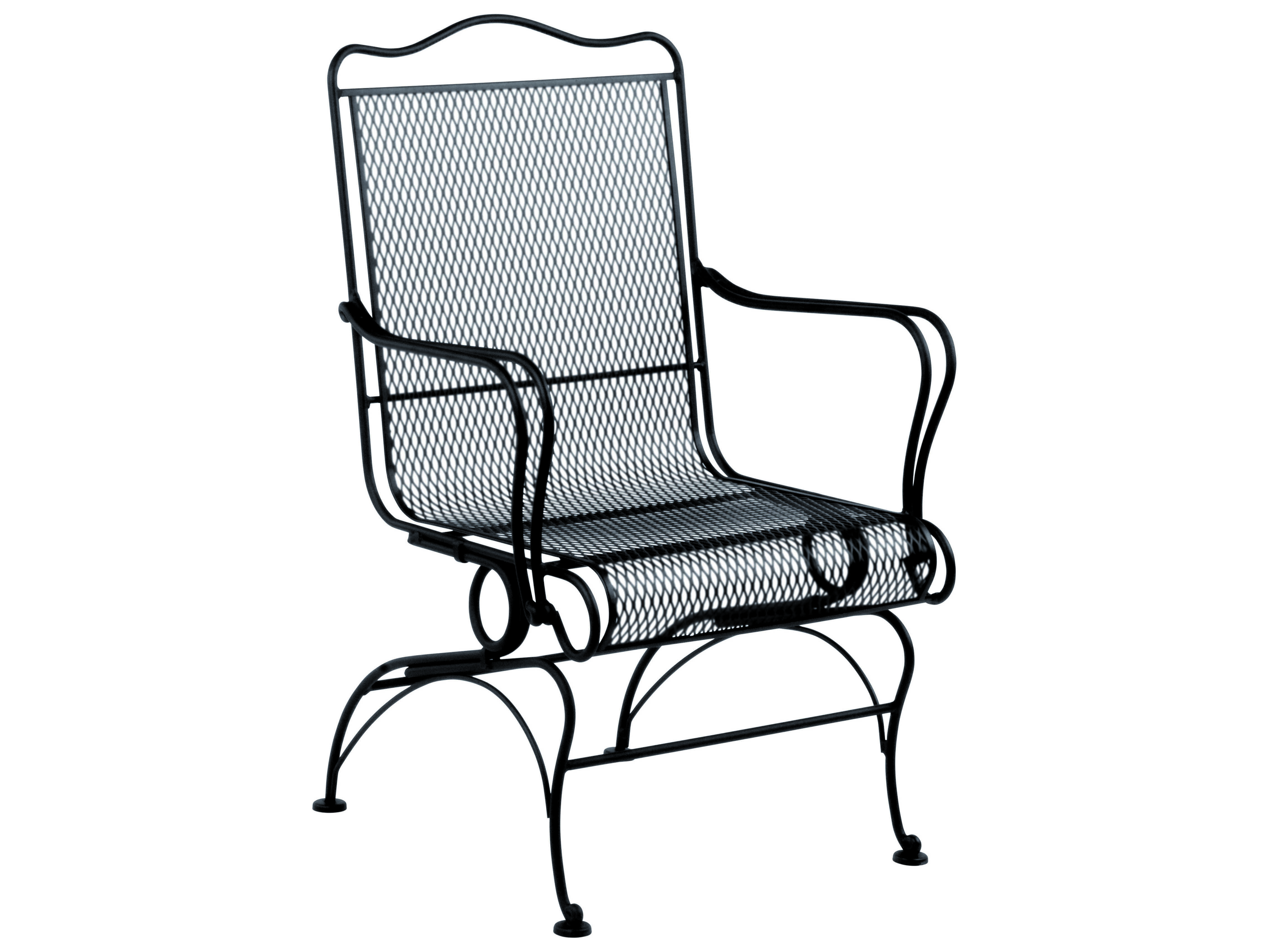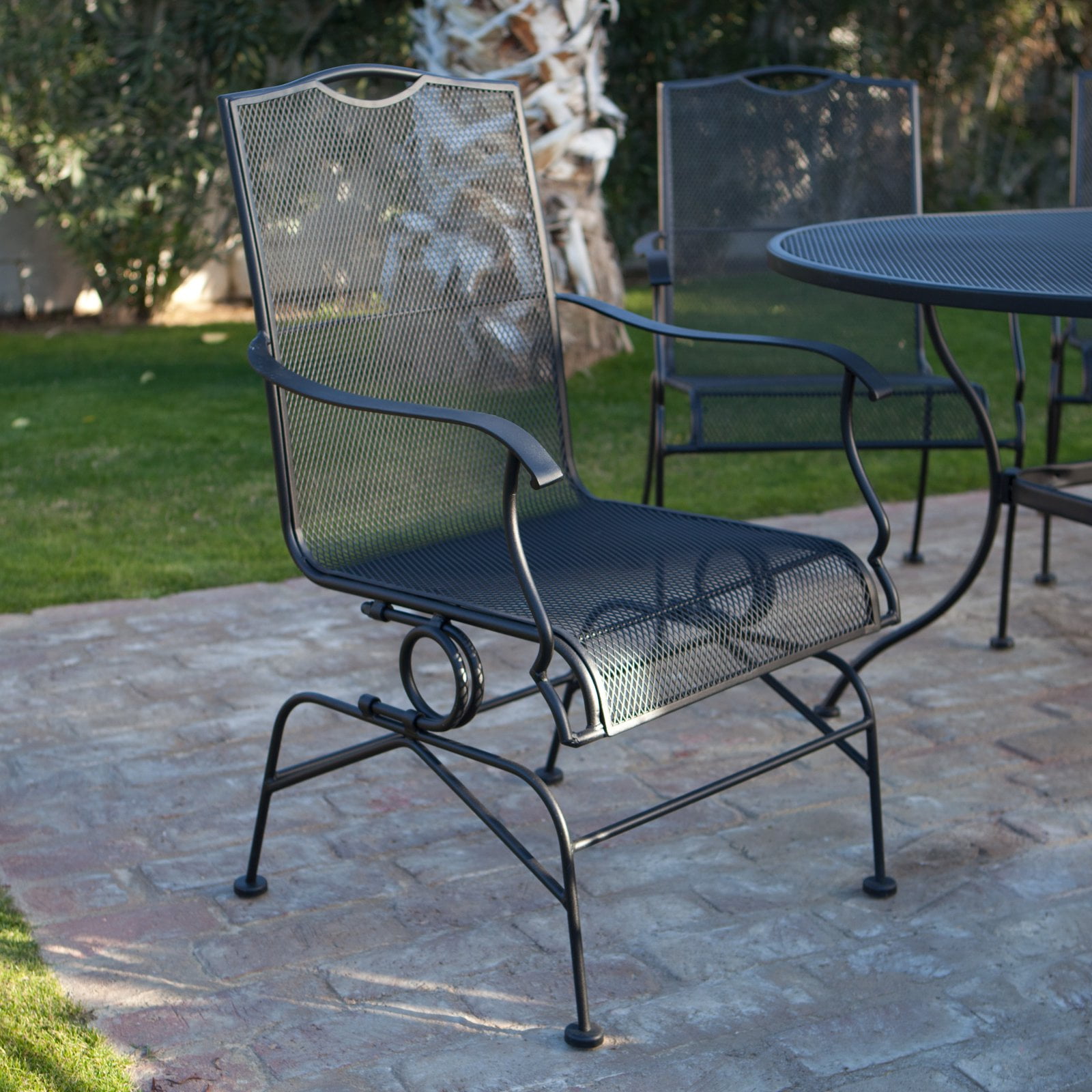Design & Aesthetics of Wrought Iron Coil Spring Dining Chairs

Wrought iron coil spring dining chairs offer a unique blend of elegance, durability, and comfort, making them a captivating choice for diverse interior styles. Their inherent strength and malleability allow for intricate designs, resulting in pieces that are both visually stunning and remarkably sturdy. This enduring appeal stems from a fascinating interplay of material, craftsmanship, and design principles.
Wrought iron coil spring dining chairs possess a distinct visual appeal that sets them apart from other seating options.
Visual Appeal and Design Elements
The inherent beauty of wrought iron lies in its ability to be shaped into intricate and elegant forms. Coil springs, often integrated into the seat and back, add a layer of both comfort and visual interest. The springs themselves can be subtly incorporated or prominently featured, depending on the design. The contrast between the strong, dark lines of the wrought iron frame and the softer curves of the springs creates a dynamic visual tension. This is further enhanced by the potential for decorative elements, such as scrolls, flourishes, and hand-forged details, which add a touch of artistry and sophistication. Typical color palettes often revolve around dark metallic finishes – black, dark bronze, or even antique finishes – which highlight the intricate detailing and create a sense of timeless elegance. However, powder coating allows for a wider range of colors, including vibrant hues, to complement contemporary settings.
Aesthetic Comparison with Other Materials
Compared to wooden dining chairs, wrought iron coil spring chairs offer a more industrial and robust aesthetic. Wood chairs, with their natural warmth and varied grain patterns, project a more traditional or rustic feel. While both can be elegant, the wrought iron’s strength and potential for intricate detailing offer a different kind of visual impact. In contrast to chairs made from other metals, such as steel or aluminum, wrought iron possesses a more handcrafted look. The irregularities and subtle variations in the metal’s finish, inherent to the forging process, add character and authenticity. Steel and aluminum chairs often have a more uniform, mass-produced appearance.
Detailed Description of a Wrought Iron Coil Spring Dining Chair
Let’s consider a specific example: a dining chair with a gracefully curved back, supported by elegant, slightly scrolled supports. The seat features a generously proportioned coil spring cushion, adding a layer of comfort and visual softness to the otherwise strong lines of the frame. The legs are elegantly tapered, ending in delicate feet. The overall style is a blend of Art Nouveau influences and a touch of industrial chic.
| Feature | Description | Material | Visual Impact |
|---|---|---|---|
| Backrest | Gracefully curved with scrolled supports | Wrought Iron | Elegant, flowing lines; creates a sense of refined sophistication. |
| Seat | Generously proportioned with coil springs | Wrought Iron and Coil Springs | Combines comfort and visual interest; contrasts the hard lines of the iron with the softer curves of the springs. |
| Legs | Tapered, ending in delicate feet | Wrought Iron | Adds a sense of lightness and elegance; balances the weight of the seat and back. |
| Finish | Dark bronze, hand-rubbed | Dark Bronze Powder Coat | Highlights the intricate detailing and creates a sense of timeless elegance. |
Historical Context & Modern Applications of Wrought Iron Coil Spring Dining Chairs

The wrought iron coil spring dining chair, a seemingly simple piece of furniture, holds a rich history intertwined with technological advancements, evolving aesthetics, and shifting societal trends. Its story is one of resilience, adaptability, and enduring appeal, reflecting the constant interplay between craftsmanship and design throughout the ages. Understanding this history illuminates the chair’s continued relevance in contemporary interiors.
Wrought Iron’s Ascent: From Forges to Furnishings
The use of wrought iron in furniture predates the widespread adoption of coil springs. The malleability of wrought iron, achieved through heating and hammering, allowed skilled artisans to create intricate and durable pieces. During the 18th and 19th centuries, the Industrial Revolution spurred mass production techniques, making wrought iron furniture more accessible. Initially, the focus was on functionality and strength, resulting in sturdy chairs with minimal ornamentation. However, as design sensibilities evolved, wrought iron pieces began to incorporate more elaborate scrollwork, flourishes, and decorative elements. This period saw the emergence of the iconic Victorian style, with its characteristic ornate wrought iron furniture, reflecting the era’s opulence and grandeur. The introduction of coil springs, offering superior comfort, significantly enhanced the appeal of wrought iron seating. This combination of strength and comfort established wrought iron as a prominent material in furniture making for decades to come.
Rustic Interior Design and Wrought Iron Coil Spring Dining Chairs
In rustic settings, the inherent strength and simplicity of wrought iron coil spring dining chairs blend seamlessly with the natural materials and earthy tones prevalent in this style. Imagine a farmhouse kitchen, sun-drenched and warm, where these chairs, perhaps painted a muted sage green or warm brown, gather around a sturdy wooden table. The slightly weathered look of the iron, hinting at its age and resilience, complements the overall feeling of timelessness and comfort that defines rustic decor. The coil springs provide a welcome touch of softness, counterbalancing the ruggedness of the iron and creating a balanced aesthetic.
Industrial Interior Design and Wrought Iron Coil Spring Dining Chairs
The industrial style embraces raw materials and exposed structures. Wrought iron coil spring dining chairs, with their unadorned lines and sturdy construction, are perfectly at home in this setting. Their dark, often unpainted finish, accentuates the industrial aesthetic, complementing the exposed brick walls, metal piping, and reclaimed wood often found in these spaces. These chairs, perhaps arranged around a metal or concrete table, contribute to a sense of raw elegance and functional beauty. The coil springs, while providing comfort, remain understated, contributing to the overall sense of minimalism and functionality that defines industrial design.
Vintage Interior Design and Wrought Iron Coil Spring Dining Chairs
Vintage design celebrates the charm and character of bygone eras. Wrought iron coil spring dining chairs, particularly those with decorative details reminiscent of specific historical periods (such as Art Deco or Mid-Century Modern), can become focal points in a vintage-inspired interior. The patina of age, adding character and history to the chair’s surface, becomes a desirable feature, highlighting the passage of time and the endurance of the material. These chairs can be paired with vintage rugs, antique furniture, and other period-specific elements, creating a space that evokes a sense of nostalgia and refined taste. The coil springs contribute a layer of comfortable modernity, enhancing the overall functionality and appeal of the space.
